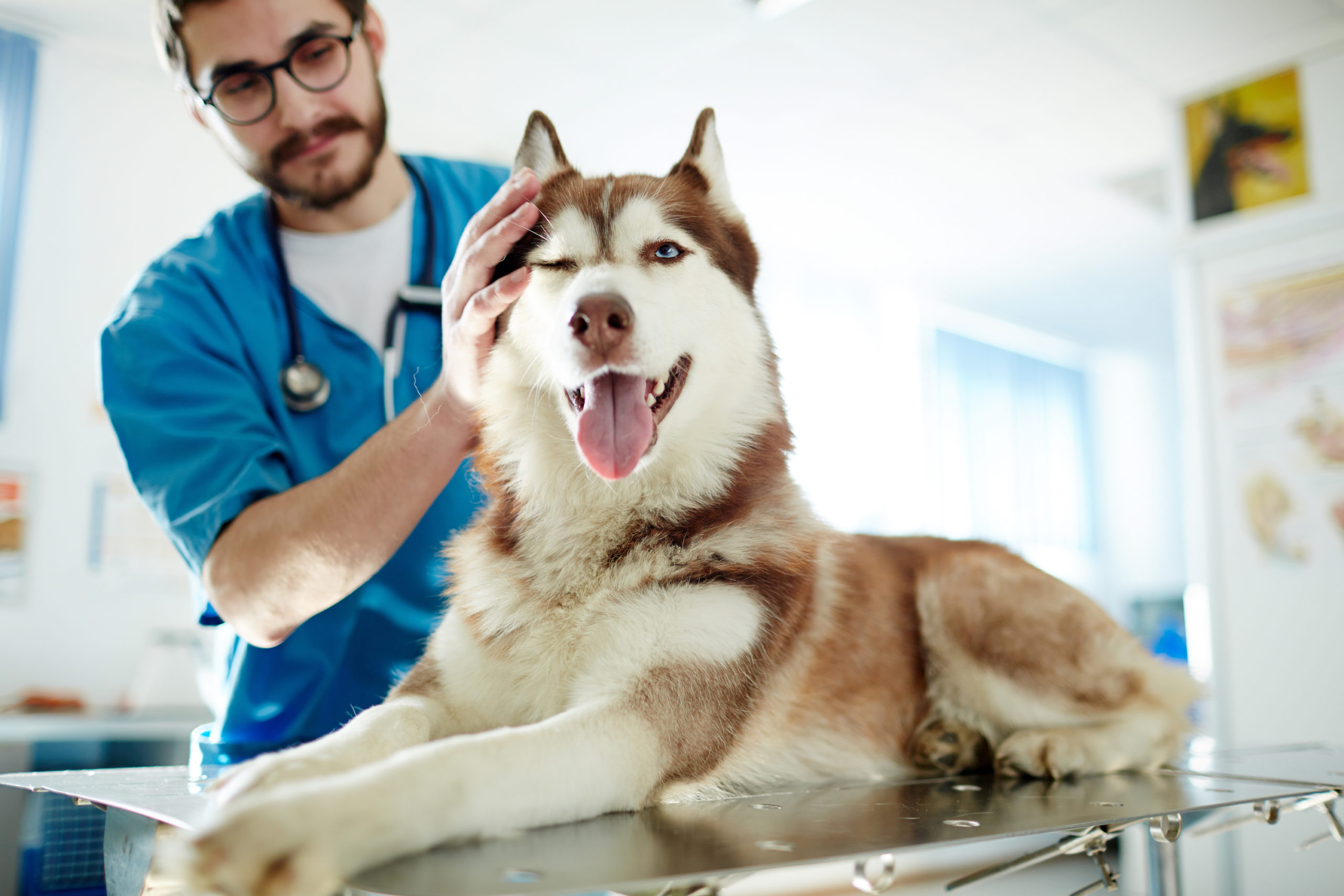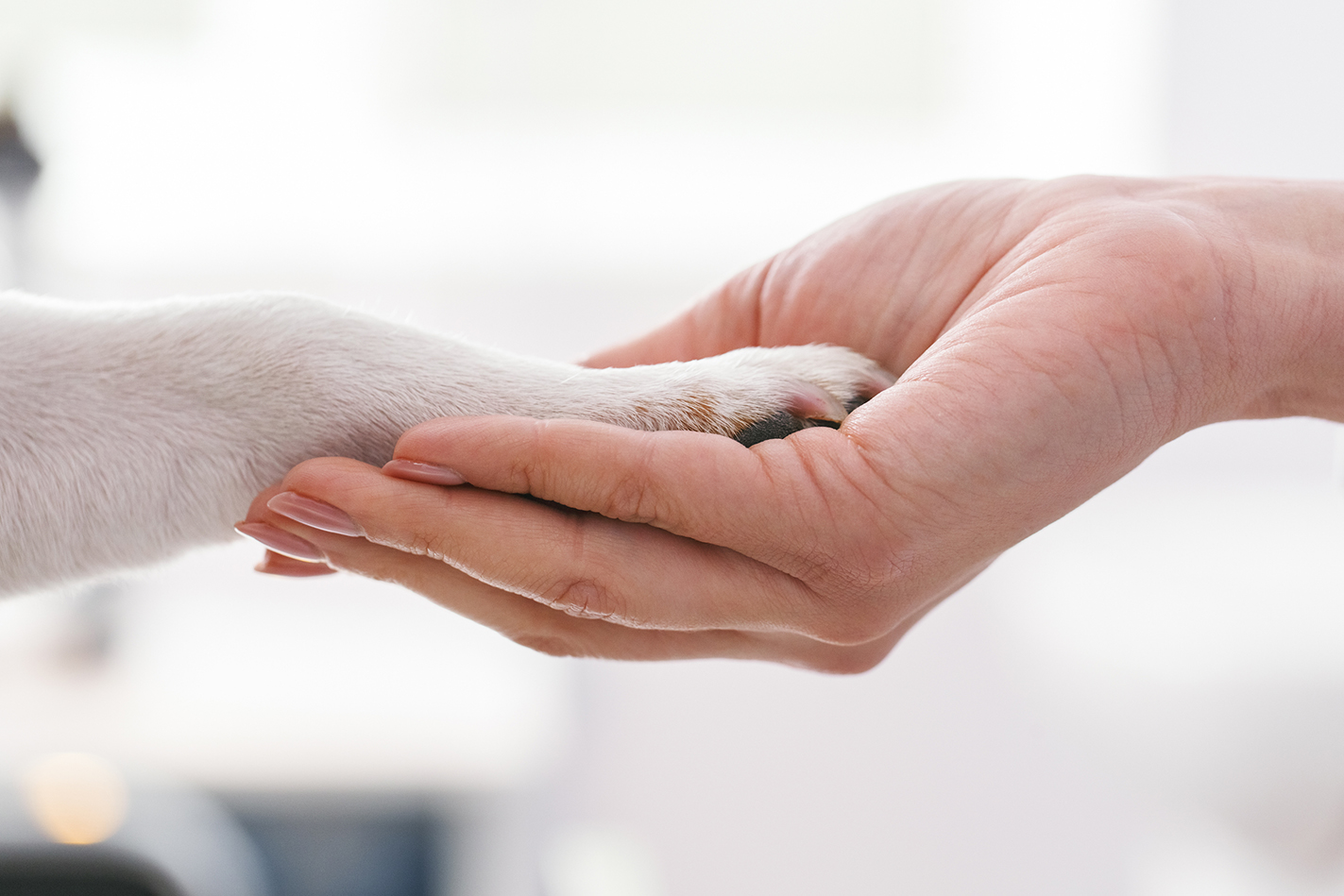As the federal government continues to try and slow the spread of the coronavirus (COVID-19) pandemic, many professionals have been wondering how best to adapt their businesses under new regulations and health safety measures. It’s no different for veterinarians. A new normal within the industry includes telemedicine, curbside admissions, and virtual staff meetings.
Understanding how important it is to remain operational while caring for patients, the American Veterinary Medical Association is not advocating for such practices and clinics to remain open to the general public if there are health risks posed to staff members. Dr. Rena Carlson-Lammers, chair of the AVMA Board of Directors, added “That is not to say that if a practice needs to close for reasons of protecting their staff members’ health or other circumstances unique to that practice that they should be compelled to remain open.” That being said, there are still a multitude of ways for veterinarians to continue working while maintaining vital health and safety measures for both staff, patients and owners.

After all, pets are an important part of many peoples’ lives. Dr. Scott Weese, DVM and professor of Internal Medicine at Ontario Veterinary College, University of Guelph adds: “People are stressed, they’re freaking out, they’re confined to their homes. Sometimes their pet is their lifeline. And we need to make sure that we’re not compounding that stress by saying, okay, well, we can’t take care of your animal right now because you’re locked away”.
So how does a veterinary practice remain operational during the coronavirus (COVID-19) pandemic while keeping their staff safe and healthy? First, let’s take a look at why veterinary practices are essential according to the American Veterinary Medical Association:
- Frontline veterinary practitioners and staff are among the healthcare professionals who provide surveillance for diseases deemed reportable by state and federal governments, including zoonotic diseases, such as rabies, influenza and Lyme Disease. They are also responsible for issuing certificates of veterinary inspection that are required for the movement of animals between states and countries, including those entering the food supply.
- Veterinarians are an integral part of our nation’s food and fiber industries. Veterinary care is critical to ensure that only healthy animals enter the food supply. While primarily housed on farms, food animals are also present in urban areas.
- Veterinary practices provide medical and surgical care daily for critically ill and injured animals.
- Veterinarians provide care for service and therapy animals, supporting both animal and human welfare.
- Veterinarians also oversee the care of laboratory animals, which are critical to research that leads to the development of pharmaceuticals and biologics, including vaccines such as those currently being developed to combat COVID-19.
- Veterinarians care for rare, threatened, and endangered animals in zoos, aquaria, wildlife rehabilitation clinics, and wildlife facilities. Even if such entities need to be closed to the public for COVID-19 mitigation, veterinarians and animal care staff must continue to care for these animals.
- Veterinarians and their support staff are trusted professionals involved in disaster situations. While perhaps different from a statutory and regulatory perspective, the training, education, and experience of veterinarians and their staff in disasters are clearly transferable skills in whatever COVID-19 risk mitigation is deemed necessary.
With the majority of veterinary practices remaining open to provide services, clinic staff are presented with the unique challenge of practicing social distancing while caring for patients. The American Veterinary Medical Association in collaboration with the University of Illinois at Urbana-Champaign’s College of Veterinary Medicine, have provided steps practitioners can take to maintain a successful business operation while also maintaining the health and safety of staff and patients.

Best Practices for Maintaining Veterinary Care During the COVID-19 Pandemic
- If treating an animal of a known COVID-19 patient, try to avoid physical contact.
- Access to sanitizer and disinfection materials should always be available.
- If a sore throat, fever, cough, or potential COVID-19 exposure is observed, coordinate an alternative person to transport the sick animal to the clinic or evaluate the animal in question via telemedicine.Always be sure to prioritize patients based on urgency versus animals scheduled for routine care or surgery that can be reasonably and safely postponed.
- If a client/patient relationship has already been established in person, treat and/or triage as many cases as possible through FaceTime, Skype, Facebook Messenger or any other telemedicine options.
- For urgent cases that must be addressed in a clinic, ensure proper guidelines and health protocols for how the animal will be tended to (i.e. sanitizing, bathing, proper social distancing from other animals and/or staff).

To minimize close human to human interactions, many hospitals have adopted altered patient intake procedures. North Carolina State Veterinary Hospital provides an example of the precautionary measures and their established protocol for addressing physical interactions and altered patient intake process:
-
- Call the animal’s designated service when you arrive at the parking lot.
- Please remain in your vehicle with your animal.
- A care professional will discuss your needs by phone when you arrive.
- At the end of the phone conversation, a care professional will come to the parking lot to bring your pet (animal) into the building for evaluation.
- After the medical team evaluates your animal, you will receive a phone call to discuss recommendations and a plan moving forward. Verbal consent for treatment and details surrounding financial estimates will be authorized via this phone call.
- Shortly thereafter you will receive a phone call from a customer service representative to obtain a deposit via one of their payment methods.
- Updates will be given regularly via phone by your medical team.
- Once the care of the animal is complete, the discharge process will be discussed.
Ultimately, veterinary practitioners should remain vigilant by keeping up to date with evolving health protocols and the nuances of the coronavirus (COVID-19) pandemic itself. Preparation is key to maintaining a viable and successful practice while also educating clients. It is likely that many owners question whether their pets can be infected by the coronavirus (COVID-19). While many researchers believe that the virus is not a health threat to dogs, two pet cats (one in Hong Kong and one in Belgium) have tested positive for COVID-19.

At the time of this article’s publication, Dr. Karen Terio, chief of the zoological pathology program at the University of Illinois, stated “…there’s a whole lot more we don’t know about this virus”. Dr. Terio was commenting on a recent development regarding a tiger at the Bronx Zoo that has been infected with COVID-19. The American Veterinary Medical Association has reported preliminary results of “experimental infection” of domestic animals such as dogs, ferrets, and cats in China. It is important to note that these results do not represent real-world circumstances and that the AVMA emphasizes “caution in not overinterpreting the results.” Lastly, the World Health Organization states, “There is no evidence that a dog, cat or any pet can transmit COVID-19. COVID-19 is mainly spread through droplets produced when an infected person coughs, sneezes, or speaks”.
It’s important to recognize the stress that the COVID-19 pandemic and the resulting quarantine can have on both pets and pet owners alike. A study published in 2019 found that stress can be transferred from humans to dogs. This interspecific synchronization has led scientists to find that higher cortisol levels in owners are matched by raised levels in their dogs. Our previous article described ways in which you can keep your dog healthy and active during the current quarantine. However, if your dog is displaying prolonged signs of anxiety such as destructive chewing, shaking or incessant barking, Clomipramine Hydrochloride tablets can help relieve these symptoms. If you believe your dog’s anxiety is not subsiding on its own and its behavior is becoming more troublesome, contact your veterinarian.
Visit the links below for more information regarding the implications of COVID-19 in animals, anxiety in dogs and what pet owners can do to help.
Five Common Signs Your Dog Has Anxiety
Benefits of Clomipramine Hydrochloride: A Generic Anti-Anxiety Medication
Top Four Dog Breeds Most Likely to Suffer from Anxiety
Can My Dog Get The Coronavirus (COVID-19)?
Keeping Your Dog Healthy During Quarantine
If you believe your pet is sick, please contact your local veterinarian. For more information on Coronavirus (COVID-19) from the Centers for Disease Control and Prevention click here.